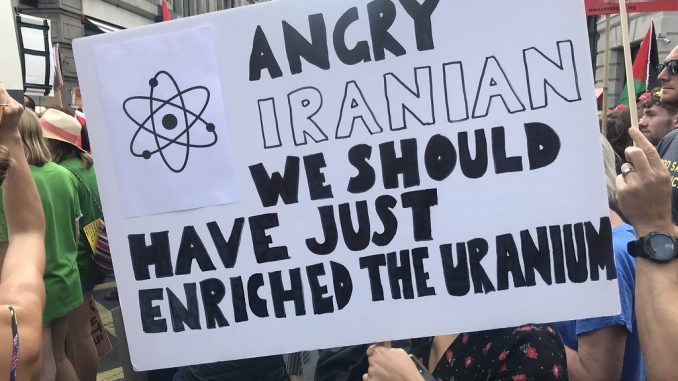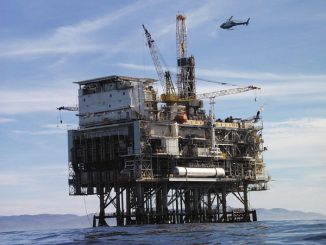
Iran will exceed the internationally agreed limit on its stockpile of LEU within 10 days, Iran’s atomic energy agency said on Monday.
A spokesman for Iran’s Atomic Energy Organization said the country would raise enrichment levels by to 20 percent – close to the levels used in weapons – for use in domestic reactors, but stressed that Europe still has a chance to save the 2015 nuclear deal if it wants to find a means of protecting the Islamic Republic from the crippling effect of US economic sanctions.
“We have quadrupled the rate of enrichment and even increased it more recently, so that in 10 days it will bypass the 300 kg limit,” Behrouz Kemalfandi, spokesman for Iran’s Atomic Energy Organization, said on state television. “There is still time … if European countries act.”
Iran will exceed the internationally agreed enrichment level of 3.67 percent, the amount allowed to develop nuclear power. The rate for building nuclear weapons is 90 percent, but according to nuclear experts, access to enrichment from 3 to 4 percent is equivalent to about two-thirds of the work done to that figure by 90 percent, as any increase exceeds that small amount that seems to speed up the break time.
Tehran is threatening to drop its commitments under the nuclear deal, a year after the Trump administration withdrew and re-imposed sanctions on Iran’s economy, most notably the oil sector, the country’s biggest source of revenue.
The nuclear agreement, officially known as the Joint Comprehensive Plan of Action (JCPOA), was intended to provide Iran with sanctions subsidies in exchange for restrictions on its nuclear program and was signed under the Obama administration alongside the United States, France, Germany, the United Kingdom, Russia and China.
The other parts involved in the agreement opposed the United States’ withdrawal and vowed to keep the deal alive, even considering the creation of a special vehicle that could facilitate trade with Iran while avoiding US secondary sanctions.
European leaders need to “act, not talk,” a spokesman for Iran’s Atomic Energy Organization said on Monday.
The announcement came a few days after suspected attacks on two foreign tankers in the Gulf of Oman, which US authorities blamed on Iran. The site of the blast is located near the critical shipping corridor, the Strait of Hormuz, a narrow corridor that accounts for 30 percent of the world’s sea-transported oil.
The events, which pushed oil prices up to 4% and forced ship crews to abandon their disrupted ships, came just a month after four oil tankers were damaged in alleged sabotage missions that the US attributed to to Iran. Tehran denies all these accusations, claiming that Washington aims to fuel “Iranophobia” and find an excuse to go to war.
The third technical advantage is the constant behavior of the oil price as it moves in the trading ranges. Oil has a solid pattern of movement in trading ranges around the $11 level.
The application of the commercial scale projection methods gave a target near $76. This has been achieved and a retreat from this price level is an expected part of the trading range pattern. A break above $76 gives a bullish target near $ 87.
The continuation of a strong bullish trend appears when the price is able to move above the resistance near $76 and above the trend line value. This may indicate that the trendline is working again as a support feature.
All support and trend strength continue to point to a temporary decline in oil prices. The long-term trading target is approaching $87, so traders will be buying in anticipation of the continuation of the trend.
The ANTSYSS trade method is used to extract good returns from this trend behavior.




Be the first to comment